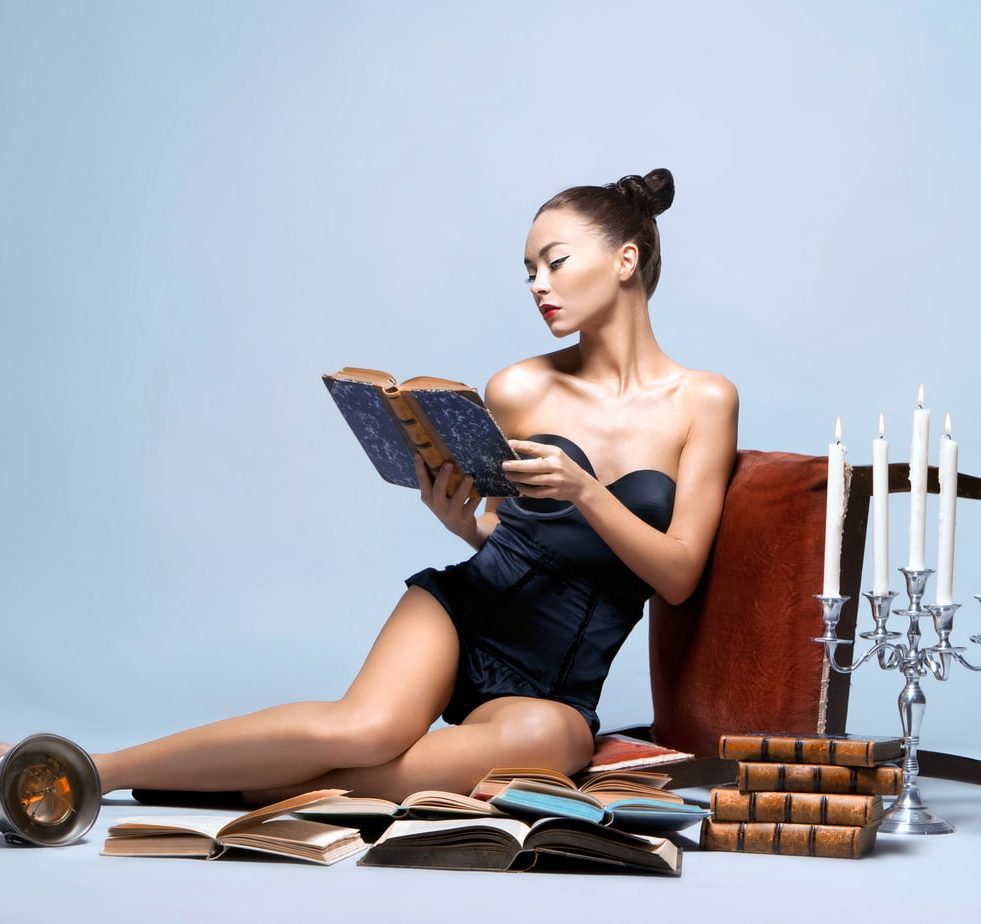The written word has long been used to explore human sexuality and human souls. We find ourselves in books, and in erotic fiction we can find our deepest desires expressed in a more perfect poetry than we thought possible. Perhaps it is a step too far to say Jane Eyre is erotica. What is not a step too far is to say that erotica – when written well – is as valuable an artistic expression of our core humanity as any piece of classical literature.
As Chris Lewando, author and tutor on the London School of Journalism’s Erotic Novel Writing course, eloquently puts it “The key to writing good erotic fiction is to write good fiction”.
How Can I Get Started?
The best place to start is by reading other works, not only of erotic fiction but of fiction in general. If you have a passion for a particular genre, whether that’s crime, sci-fi, or literary fiction, read widely and always with a writerly eye on how the story is crafted. Even without putting pen to paper, you’ll be honing your skills and finding your focus through recognising what piques your interest in other fiction.
Lewando says that, fundamentally, “if you don’t enjoy reading erotic fiction, it’s probably not your genre as an author. Authors are usually better at writing the kind of fiction they enjoy reading. Knocking out an erotic novel in the hopes of writing a best-seller is likely to result in disappointment”.
Ready To Write?
There’s no great mystery when it comes to writing erotica, with the process essentially boiling down to four key points of consideration.
- Characters
- Scenario
- Obstacles
- Language
What Makes A Good Erotic Fiction Character?
The first and most important aspect of erotic fiction is characters. Your characters are the heart and soul of your narrative. If we don’t want something to happen between them, and if we don’t feel attracted to them in some way, we are going to put that book down. As Lewando says: “If your characters are real and true, when the sex happens it will seem real and true”.
Start with basic archetypes. Hero, villain, innocent, outlaw – these off-the-shelf character types come with a ready-made set of qualities, characteristics and desires that you can exploit to create sexy individuals in your story. They can also be useful when you want to think about what groupings work well in an erotic context. A hero and a villain, pitted against one another but irresistibly attracted to each other. An innocent dragged into the exciting world of the rebellious outlaw.
These characters don’t have to remain in their original fairytale worlds either – you can just as easily transplant them into a modern-day setting. In The Pisces by Melissa Broder our protagonist Lucy can be seen as an innocent, a wandering soul, lonely and naive, whilst the swimmer she meets is a mixture of lover, hero and something much darker…
Lewando has a useful exercise to help writers get into the minds of their characters.
“I advise my students to write a brief bio of each of the main protagonists (main characters) as a first-person dialogue.” She says. “This way the author can truly get inside the characters’ psyche: discover who they are, where they came from, and what problems they need to overcome before they can gain a level of satisfaction. This method is surprisingly effective, and will also provide some neat background detail and backstory to incorporate into the fiction.”
Who’s Got The Power?
Power imbalances are particularly important to consider when creating sexual tension: a scenario where two characters are very equally matched has a different kind of erotic charge to a situation in which one of your characters is clearly more powerful than the other. In the best kinds of erotica, characters are equally powerful but in different ways. Think of Lady Chatterley’s Lover – Connie’s power comes from being a rich member of the upper classes, whereas Oliver Meller’s power is much more grounded and earthy. She has a societal power whereas he has a physical power. It’s the clash and contrast of these two forces, and their meeting in an emotional and spiritual harmony, that makes their particular story so overwhelmingly erotic.
Okay, I’ve Got My Characters – Now What?
Having a strong sense of who your characters are will help you with the next stage of your writing: building the world of the story.
Characters and their settings are necessarily intertwined, with place adding just as much to the erotic charge of the story as the people. Those wild rugged landscapes in Wuthering Heights are crucial to the sense of danger and darkness that characterises the erotically charged relationship between the two protagonists. Think about what your chosen scenario adds to the story, whether it’s a sense of rural wildness or urban opulence, and how your characters will interact with their surroundings.
Sensory Settings
Focus on the sensory experiences of your characters to set scenes with sex appeal. What do things smell, taste, look, sound and feel like in this space? If your reader can get a physical sense of the touch of velvet or soft sand, if they can smell the sea or the perfume, not only are they much more engaged with the story but you’re also recalling them to their own senses, making the reading of your erotica an appropriately embodied experience.
Good Things Come To Those Who Wait
Yes, it’s hot to read about what characters are doing to each other, but a lot of the release of these scenes will come from the amount of tension you build-up beforehand. As Lewando says “Eroticism is suggestive of a seductive slow burn, not a race to pound flesh”.
Think about the erotic appeal of anticipation and how you can work that into your story. What is it that stops your characters from ripping all their clothes off and having sex right away? Maybe the obstacle is linked to your setting in terms of time and place, maybe it’s more psychological and rooted in one or both of your characters.
The push and pull between what characters want to do and what they feel they should or can do increases the intensity of their desires, leading to some very innovative solutions. Illicit meetings, sexting, a passionate outburst – all of these things are more effective the more tension is built into your story.
A Rose By Any Other Name…
The greatest downfall of erotic fiction is often the language authors use to write about the physical and emotional worlds of their characters. One adjective too many, and suddenly the steamiest scene becomes completely laughable.
When writing about sex, it’s best to avoid too many extravagant, extended metaphors of the kind you find every year in fiction nominated for the Bad Sex Awards. Precise language tends to fare a bit better, describing exactly how someone is feeling without tipping over into the realms of the ridiculous.
Perspective is a key consideration here too. Writing in the third person is easier in some ways, as the emotions of all parties can be more clearly described from an omniscient position. However, writing in the first person allows you and your reader to be fully immersed in the scene and the moment. Play around with perspective and find what works best for you as a writer and for each story you’re working on.
But…Um…What Do I Call…You Know…?
The same advice applies to physical sensations and anatomy – stay away from florid metaphors and lengthy descriptions. The earthier your language is when it comes to the actual bodies and physical actions, the better. Again a great contemporary example is The Pisces, which covers everything from oral to anal with a sensual realism.
Think about what you find hot – what kind of language, words or phrases turn you on? And, equally importantly, what turns you off?
Ultimately this is the main thing to keep in mind when writing erotic fiction. Experiment and explore with the characters, the scenes, the sex, and take time to develop your own sense of style.
Special thanks to Chris Lewando for her input on this article. Chris began her writing career publishing tender romance before going on to write for Virgin’s Black Lace and Chimera imprints under a pseudonym. She also self-publishes other genres. Chris has been a fiction tutor for the LSJ (The London School of Journalism) for many years. Her book Waymarks for Authors is provided free to her students, and to readers of this blog.
Website: www.chrislewando.com.

Esme (she/her) is the editor of the KK blog. She is also a writer, copywriter and full-time Aquarius.

